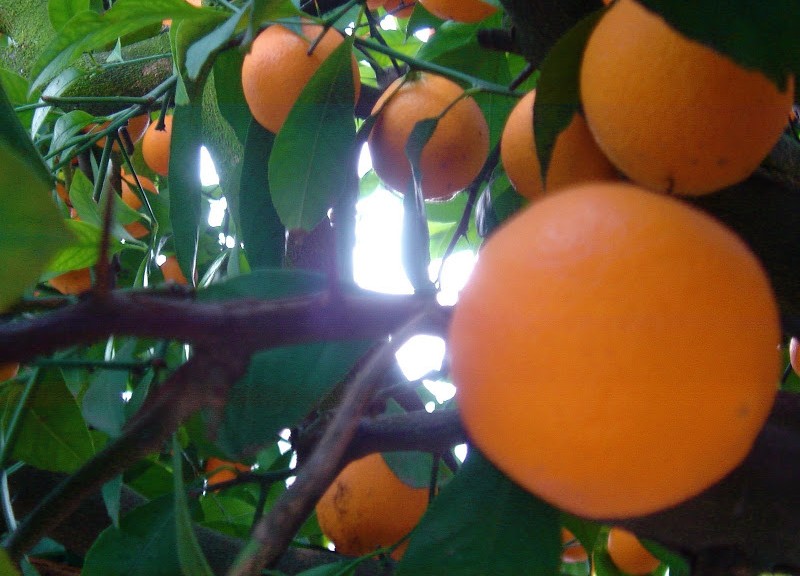The first thing to know about Rangpur limes is that they’re not really limes at all. They’re a hybrid of mandarins and lemons that look like clementines: smallish, bright orange, with a smooth, thin peel that comes off easily to reveal segments that readily pull apart. The resemblance stops, however, when you pop a piece into your mouth. Rangpurs are intensely sour, with a flavor like a smoky lime—hence the name.
If you’ve never heard of Rangpur limes you’re not alone.
When Robert Lambert moved into a new home in Marin County, California in 1986, there was a strange tree beside the front door. In the summer it was blanketed in tiny, aromatic flowers. Then from December to March it produced brilliant orange fruits that were so sour as to be inedible. It wasn’t until some years later that a neighbor told Robert his tree was a Rangpur lime—and advised him that the fruit makes a killer addition to a gin & tonic. (Tanqueray figured that out too—they launched a Rangpur lime gin a few years back.)
Thanks to all those flowers Rangpur lime trees are often planted ornamentally. It makes me wonder—when someone decided to bring these trees to the US, was it because they loved super sour fruit, or did they just have a soft spot for pretty trees? Rangpur lime trees originated somewhere on the Indian subcontinent, and Rangpur lime juice is still a frequent, flavorful addition to orange juice in India. The first Rangpur lime seed arrived in the US in Florida in the late 19th century. Today they’re most common in California, but they’re hardly a household name. Robert Lambert is working to put Rangpur limes on the culinary map.
When I say Robert, I don’t mean Robert and his employees. I mean Robert.
Robert is our source for all sorts of fruit-based delectables, ranging from jams and marmalades to caramel sauces, fruitcakes, and even one-offs like whole spiced crab apples. He is a one-man operation who works seven days a week, twelve hours a day. He does everything himself: he picks most of the fruit, he chops it, he zests the peels, he candies the rinds, he cooks and stirs endlessly as bubbling molten fruit sputters at him, he fills jars one by one instants after the jam comes off the stove, and he screws on lids while the jars are still boiling hot: “I burned off the sensation in my fingers long ago.”
One of the first products he started making was Rangpur lime syrup, and it’s always been one of his best sellers. He picks many of the Rangpur limes he uses, and gets the rest from a curious collection of sources. For instance, there’s a 93-year-old woman with a couple of trees. And then there’s a guy he met at the farmer’s market who owns a bicycle company.
The base of Robert’s Rangpur lime syrup is essentially the simple syrup of sugar boiled in water that’s used in bartending and at restaurants, but Robert doesn’t do anything simple so we might consider this a Complicated Syrup. To make it, Robert takes 15 pounds of Rangpur limes, juices them, and shreds the flesh. Then he scrapes out the peels and blanches them to make them soft. Next he steeps the peels in a boiling sugar syrup for about an hour. Finally, he adds the juice back in and pours it all into tall, thin bottles with a slice of peel. The result of a few hours’ work chopping and cooking and bottling—not to mention the time spent picking the fruit—is 120 five-ounce bottles.
If you don’t have a Rangpur lime tree growing outside your doorstep, Robert’s syrup is the next best thing.
Robert is absolutely meticulous in his work, and his products taste as pure and fresh as the fruit he uses to make them. Rangpur lime syrup is bright, tart, just a tad bitter, with a subtle sweetness underlying it all. Using it adds an immediate jolt of smoky lime flavor. Here are a few of my favorite ways to deploy its gifts:
1. Shake it into a cocktail—especially one made with gin.
2. Whisk it into a vinaigrette with half syrup, half rice wine vinegar and serve on a salad of cucumber and carrot.
3. Drizzle heated syrup over fresh berries, pound cake, or ice cream.
4. Mix it into oatmeal for a sweet and tart start to the day.
5. Stir it into tea for a fresh, bright sweetener.
6. Pour it onto fish or duck fresh off the grill.

